
Wine Culture and Information since 2002 - Volume 22
 Wine Culture and Information since 2002 - Volume 22 |
|
Issue 21, Summer 2004 |
Contents |
|
|
The Importance of Vintage |
|
Every wine lover - as well as everyone who is getting into the charming world of the beverage of Bacchus - knows that among fundamental factors determining the quality of a wine is also included vintage. It does not only represent an important factor: the vintage is often considered as the only element in order to determine the real value - not only the money value - of a wine. In many cases vintage is the determining factor for the economic value of a wine, in particular as time passes by and, sometimes, even in case the keeping of the bottle was not the best. How actually important is the vintage of a wine? Of course - and indisputably - it is an extremely important factor but it is also true it is not the only factor capable of making a wine great. It should also be remembered - to tell the truth - that most of the times the myth of the vintage is also used for a disputable speculation. Let's make this concept clear from the beginning: vintage is important and according to the meteorological condition of the seasons, it is fundamental in determining a good part, and probably more than that, of the sentence about the quality of a wine. It should be however remembered a fundamental concept indissolubly connected to vintage and that allows consumers to prevent certain speculations. Since some years - an event which seems to magically and questionably repeat itself every time - as the harvesting period is about to come, it is frequently heard talking about the so called “vintage of the century” capable of promising great wines wherever and however. Finally those wines are poured in glasses and everyone has the chance to deny or confirm the premises of the year. Whereas it is understandable the reason of many rumors for purely commercial purposes, it is less understandable - as well as less agreeable - the honesty and the low credibility towards consumers. Of course, no one has a crystal ball to certainly tell the future, anyway a bit of seriousness would not be bad in some cases. In considering a vintage - which certainly plays an important role - it is good to remember that it only and uniquely makes sense when applied to a specific area, and in order to be more exacting, it has a higher value only in pretty small and limited areas. Whether it is true the quality of the vintage is determined by meteorological conditions, it is also true that, for example, in case in Umbria vintage was favored by good meteorological conditions, this does not mean that all the wine areas of the world had the very same positive conditions. Two emblematic examples are represented by vintages 1997 and 2002. 1997 has been defined as the best vintage of the last century - although it could be defined, polemically talking according to the repeated rumors of every year, one of the many defined as the best - and this was certainly true for some areas of the world, whereas in other ones it has been ordinary and modest. The same can be said about 2002, no matter it has been defined by many - rightly - as a non truly good vintage, in some areas it has however been capable of giving pretty good wines. In the sake of truth it should also be said the influence of the meteorological condition of a year is frequently compensated by the skill of the wine maker as well as by the support technology is capable of offering in the cellar. When the year is not particularly benevolent in the vineyard, most of the time it is the wine making technology which is capable of making real miracles - often unthinkable - in order to make acceptable even the worst conditions. In this regard it should be remembered the honesty of many producers who, having realized the not truly good meteorological condition of the year, prefer not to commercialize their wines or to sell them as more modest products, in particular at lower prices. Whether it is true this kind of choice is remarkable according to the honesty shown towards their customers, it is also true it represents an indisputable factor of seriousness for the safeguarding of the winery's best products. It is certainly true the choice of not commercializing these wines, or to reclassify them according to more appropriate standards for that vintage, represents an indisputable factor of honesty and seriousness, but it also indisputably represents a factor for economic loss. This is therefore a truly remarkable choice. Therefore, how can a consumer be safeguarded towards the vintage and - in particular - the speculation that can be made about this factor? It is frequently heard that in the worst or mediocre vintages it is best to choose wines from reliable producers, whereas in the best vintages “less famous” producers can be capable of making remarkable wines. In the less favorable years it is indisputable the technological factor and the skill of a good wine maker play a fundamental role for the improvement of a not truly excellent raw matter. In the best vintages - when the technological factor is less determinant because of a better quality of grapes - even “modest” producers are capable of making great wines. Does this mean that in order to make a quality wine it is necessary having modern and technologically advanced tools? Certainly not. No matter wine making technology now offers reliable and precise tools, allowing the control of the quality and the correctness of each stage, the human factor plays in the cellar - today as it was in the past - a role of primary importance. Despite human factor still plays an important role in the production of quality wine, it is indisputable the technological support has made the importance of vintage less determinant than it was in the past. It is thanks to wine making technology the gap among the many producers has been reduced while allowing them to make wines with less and less faults, however not helping at all to improve the producer's predisposition to quality. Of course, when the year is favorable, its support is reflected on wine in a strong and determinant way, sometimes making the wines produced in less favorable years appear very different as well as insignificant. Despite vintage represents an important factor, the skill of wine makers, as well as the technological support, avoid consumer to be continuously get informed about the real quality of a vintage and to be able to order a wine at the restaurant with a relative tranquility. Maybe the wine will not be exceptional in some vintages, however it will not even be very bad or disgusting, and it will however be appreciable. Finally vintage represents one of the many elements which makes a wine special and exciting, a factor that every year is capable of making the beverage of Bacchus different from another, with nuances and personalities that, in any case, are always capable of catching our attention and to tell different stories - either good or bad - by means of our senses.
|
||||
MailBox |
|
In this column are published our reader's mail. If you have any comment or any
question or just want to express your opinion about wine, send your letters to
our editorial or fill in
the form available at
our site.
|
| A friend of mine says she is good in making any kind of risotto. She challenged me: I will win an invitation for dinner in case I will propose good matching with wines. Can you please help me? What kind of criteria should I use in choosing a wine? Where can I find a list of wines meeting these criteria? |
| Giulio Genga -- Lomagna, Lecco (Italy) |
| The choice of a wine for the matching with a food can be determined not only by purely technical factors, but also by traditional reasons and, last but not the least, by indisputable subjective preferences as well. In case the choice of a wine is to be determined according to technical considerations - that is by making use of the concepts applied by enogastronomers - it is necessary to know not only the type of food, in your case risotto, but also and in particular the other ingredients used in the preparation of the recipe. According to this consideration , it is therefore not very useful - as well as not very reliable - suggesting one or more generic wines. Rice is a food rich in starch, having a basically sweet taste, therefore it can be matched with crisp and effervescent wines, that is white wines, sparkling wines and many rose wines. The discriminant factor it is however represented by the other ingredients completing the organoleptic profile of the recipe and useful in determining a good match. In case in your risotto there are vegetables - which basically have a sweet taste - the above mentioned styles of wines are still valid. The same considerations are also applicable in case the risotto is made with crustaceans or fish. In case in the risotto there is meat - which increases both the structure of the recipe and the succulence - it will be appropriate to choose a pretty alcoholic wine or a moderate tannic wine, therefore it could be chosen a white wine as well as a red wine. Interesting matching with risotto can be made with sparkling wines, whose effervescence and acidity are well matchable to rice, however the final choice of the sparkling wine will also be determined by other ingredients as well. Finally we suggest you our Wines Guide that, besides including all the wines tasted and published by DiWineTaste, it can also suggest a wine according to a specific food or recipe. It will be enough to enter in the “food” field the type of risotto, for example “risotto with shrimps and zucchini”, and the system will suggest you a list of wines matchable to your recipe. Good luck with your dinner invitation! |
| I keep bottles of red wine inside a cupboard in order to keep them away from light and with little changes of temperature. I was thinking about keeping my bottles inside the cases in which are sold and still inside this cupboard. Do you think this solution would change both the temperature and humidity? |
| Gino Biscardi -- Mestre, Venice (Italy) |
| Temperature and humidity represent fundamental factors for the good keeping of bottles of wine. Temperature strongly affects the aging process: for this reason it is preferred to keep bottles at a relatively low temperature - of about 14° C (57° F) - and it is essential this temperature to be constant. A temperature like that allows a slow and stable aging capable of favoring the best development of the organoleptic qualities. Humidity - which should ideally be about 70% - allows the good keeping of the mechanical and physical qualities of corks, in particular their elasticity, while avoiding dangerous shrinkage. In your case the internal temperature of the cupboard is strongly influenced by the room in which it is located at, with the exception, of course, in case you are using a so called “cellar fridge”. Cardboard has a certain thermal insulating property, however it also has the capacity of absorbing humidity. In case the environmental conditions offered by your cupboard are not particularly good, the keeping inside cardboard cases can offer a better stability of temperature which will however be influenced by the internal temperature of the cupboard. Whether it is true it is advisable to keep wines inside the cases in which they were sold - either made of cardboard or wood - it will be appropriate, whenever possible, to place the cupboard in a room offering good conditions of temperature and humidity, while covering the internal walls of the room, or simply the internal sides of the cupboard, with insulating sheets used for the building of houses in order to insulate them from heat. |
UmbriaLand of saints and heroes since ever, the green heart of Italy is also the indisputable land of historical and renowned wines, a strong connection which always had accompanied the genuine and tasty cooking of the region in the course of its history |
|
Umbria, among the most suggestive and charming regions of Italy, is by many appreciated for its historical, cultural and artistic richness as well as for its enchanting views, rich of green in which dominate olive trees and vines. Olive oil and wine are in fact two fundamental elements of the enogastronomical culture of the region which set its root in ancient rural traditions. Umbrian cooking is based on simple and humble ingredients however genuine, tasty and dainty: a good attraction for the countless tourists that every year come in this region looking for nice food and nice wines. Umbria has always been considered a land of saints, heroes and refined artists who gave fame and prestige not only to the history of the region but also to the one of Italy. Umbria is also famous in the world for its wines: it is not by chance this region is by many considered as the “Italian Bourgogne”, and here enology set its root in the era of the ancient Etruscans, the glorious and mysterious people who established in the western part of the region more than 3,000 years ago. The prestige of Umbrian wines was very high during Etruscan and Roman times and many are the praises written by many great and important authors of the past, such as Pliny the Elder and Martial, who praised their quality in their writings. In subsequent periods the notoriety of Umbrian wine experienced different moments of luck and fame. Around the end of 1400's Umbrian wine was very appreciated and looked for, in particular the ones produced at Orvieto that were also requested by the renowned painter from Perugia Bernardino di Betto, known as Pinturicchio, as a part of the remuneration for his works at the cathedral of Orvieto. Even other Umbrian painters, including the great Pietro Vannucci, known as Perugino, requested that part of the remuneration for their paintings would be in the form of good wine, a custom, it seems, pretty common among the artists of the past. In later periods, in Umbria as in other Italian regions, wine was produced in huge quantities and low quality, as wine was a fundamental resource for the nutrition of the ones who was making it, therefore the more, the better.
The real change for Umbrian enology and viticulture takes place in the beginning of the 1960's which will lead, in 1968, to the first and important prestigious success of the first Umbria's DOC designated to Torgiano. This important and fundamental success was the consequence of the tenacity and capacity of one of the greatest people of the Umbrian and Italian enology, Giorgio Lungarotti, whose wines are now renowned all over the world. The success of Torgiano will be affirmed in 1990 with the designation of the first Umbrian DOCG to Torgiano Rosso Riserva wine. Few kilometers from Torgiano another great man of Umbrian enology is ready to revive the great heritage of his land. Arnaldo Caprai begins his triumphant way to the world of wine by acquiring, in the beginning of 1970's, some vineyards in Montefalco. From the beginning he pays his attention to the dream of reviving the fame of the local red berried grape Sagrantino, forgotten and scarcely appreciated by many and in Montefalco, at those times, many are about to replace it in the vineyards with other varieties. Caprai is convinced about the potentialities of Sagrantino grape and calls in the winery his son Marco, whose passion and tenacity will be fundamental for the development and the affirmation of worldwide success for Sagrantino. Even at Orvieto, already famous in ancient times for its white wines, will take place some important events that will greatly contribute to the success and prestige of Umbrian enology. It will be the Antinori family to create at Castello della Sala at Ficulle, near Orvieto, two of the most celebrated Italian wines in recent years and that will contribute to the creation of a new style. Thanks to the intuitions and passion of wine maker Renzo Cotarella - brother of another celebrated wine maker, Riccardo Cotarella, who were both born in Umbria - it will be made a great white, Cervaro della Sala, mainly produced with Chardonnay to which is added a small part of the par excellence Umbrian white berried grape: Grechetto. A wine which impresses from the very beginning for its elegance and, as a matter of fact, represents a new style in Italian white wines. The success is repeated few years later with the renowned Muffato della Sala, produced with grapes affected by Botrytis Cinerea - the noble rot - a phenomenon that Italy has in Orvieto its main representative. The current enological condition in Umbria is facing great changes in which quality is continuously increasing and most of the producers in the region have abandoned since many years bulk productions in favor of a better quality. Umbria is the only region of peninsular Italy having no coastlines and the land mainly is hilly, a condition that allows a good cultivation of vine and olive trees. The hilly view is in fact a virtually constant characteristic present everywhere in the region. From north to south, from east to west, Umbria is an uninterrupted up and down of hills and slopes in which dominate the gray-green colors of olive trees and the neat rows of vineyards occasionally broke by the many and placid cities rich in art, history and traditions. Wines produced in Umbria are both red and whites - virtually in equal quantity - as well as sweet wines produced with grapes dried on mats, of which the best representatives are Vin Santo, which in Umbria has a long and strong tradition, just like in many other regions in Italy, and Sagrantino di Montefalco Passito. In Umbria are being cultivated both white and red berried grapes, and both represent an important factor of region's enology. As opposed to other regions in which dominates a specific style of wine, in Umbria, also because of its traditions, the production is divided, almost equally, between white wines and red wines. Among white berried grapes, Grechetto is the one playing the primary role, an autochthonous Umbrian grape spread all over the region and with which are produced interesting white wines, both vinified with this grape alone and blended with other varieties and in particular with Chardonnay. The most important red berried grape is Sagrantino, and no matter it is almost exclusively cultivated in Montefalco - its homeland - the wines produced with this grape are now the most representative ones of Umbria. Among other white berried grapes of the region there are Malvasia Bianca, Trebbiano Toscano, Verdello, Canaiolo Bianco and Procanico, whereas for red berried grapes there are Sangiovese, Ciliegiolo, Canaiolo Nero, Montepulciano, Barbera and, in particular, Gamay introduced in the area of Trasimeno lake more than one century ago and with which are produced interesting wines. In Umbria are also found the so called “international grapes”, such as Chardonnay, Sauvignon Blanc, Pinot Blanc and Riesling, as for white berried varieties, as well as Merlot, Cabernet Sauvignon, Pinot Noir and Cabernet Franc, as for red berried grapes.
|
||||||||||||
|
The wines of Umbria are classified according the quality system in force in Italy and precisely, from the lowest level to the highest one: Vini da tavola (table wines), IGT (Indicazione Geografica Tipica, Typical Geographic Indication), DOC (Denominazione di Origine Controllata, Denomination of Controlled Origin) and DOCG (Denominazione di Origine Controllata e Garantita, Denomination of Controlled and Guaranteed Origin). In Umbria there are currently two DOCG areas: Torgiano Rosso Riserva and Sagrantino di Montelfaco (or Montefalco Sagrantino), both being red wines and to certainly be considered among the most important wines of the region. The wine production areas currently designated as DOC by the quality system are 11 and precisely: Assisi, Colli Altotiberini, Colli Amerini, Colli del Trasimeno, Colli Martani, Colli Perugini, Lago di Corbara, Montefalco, Orvieto, Rosso Orvietano and Torgiano. It should be however observed that a pretty high percentage of wines is produced as IGT (Indicazione Geografica Tipica, Typical Geographic Indication) and here, just like in all the other regions of Italy, the quality of these products is often higher than many other wines belonging to higher categories.
|
|
Few kilometers south from Perugia, the capital city of Umbria, there is the town of Torgiano, renowned all over the world for the production of wine. Its success is mainly the result of the work of Giorgio Lungarotti, who thanks to his intuitions, tenacity and capacity was capable of transforming the image of a place by means of wine. The area of Torgiano is now recognized both as DOC and DOCG, in both cases it was the first area in Umbria to achieve this goal (DOC recognition was designated in 1968 and DOCG in 1990). The notoriety of Torgiano certainly is represented by Torgiano Rosso Riserva, the only DOCG wine of this area and mainly produced with Sangiovese and Canaiolo Nero grapes. The production of Torgiano's DOC wines is pretty vast and includes white, red, rose and sparkling wines. Bianco di Torgiano is produced with Trebbiano Toscano and Grechetto and among the white wines are also interesting the monovarietals produced with Chardonnay, Pinot Gris and Riesling Italico. Rosso di Torgiano - the first red to be famous outside this area - is produced with Sangiovese, Canaiolo Nero and a small part of Trebbiano Toscano. The production of red wines also includes monovarietals made of Cabernet Sauvignon and Pinot Noir, whereas rose wines are produced with the same grapes of Torgiano Rosso.
|
|
Montefalco certainly is the wine area which is having lots of attention since many years and which is more and more becoming the reference wine area in Umbria. Montefalco area is located about 40 kilometers east from Perugia (about 25 miles) and the success of its Sagrantino called in the area famous producers coming from other regions. Just like the neighboring Torgiano, Montefalco shares its area with DOC and DOCG designations. Only wines exclusively produced with Sagrantino are recognized as DOCG, which can be produced as dry and sweet (passito). In past times Sagrantino was exclusively produced as passito, a sweet wine, rich and full bodied, which well matched the rich Easter meals of Montefalco's people. Despite Sagrantino Passito is still very appreciated - and not only in Montefalco - it is however the dry style to catch most of the attention. Sagrantino vinified as dry is the result of pretty recent researches, about 30 years ago, anyway its improvement is mainly because of the remarkable and precious work in researching and revaluation done by Arnaldo Caprai and his son Marco. Sagrantino is a robust and powerful grape - with a very high quantity of tannins and a remarkable organoleptic richness - which concretely faced the risk of extinguishment from the vineyards in Montefalco in favor of other varieties, whereas today, thanks to the efforts of producers, it is a grape capable of making wines appreciated everywhere in the world. In the Montefalco area are also produced DOC white and red wines. Montefalco Bianco is produced with Grechetto and Trebbiano Toscano, whereas Montefalco Rosso - a truly interesting red wine - is mainly produced with Sangiovese and Sagrantino grapes and it is also available as reserve.
|
|
In past times whenever Italian wine was mentioned, Orvieto was one of the few names to be more frequently remembered. To tell the truth it should also be admitted that whether in ancient times - in the era dating as back as Etruscan times - Orvieto wines were celebrated and appreciated everywhere, the same cannot be said for the subsequent periods. Speculation done in Orvieto, not only by local producers but also and mainly by the ones coming from other areas, was just aiming to bulk productions while depriving the wine of the glorious quality which made this area famous in the past. Luckily, since many years things are changing and producers are now aiming to a strict quality in the hope of reaching that quality so praised in past times again. Orvieto is mainly renowned for its white wines produced with Procanico - the local name for Trebbiano Toscano - Verdello, Grechetto, Drupeggio - elsewhere known as Canaiolo Bianco - and Malvasia Toscana. White wines are also produced as Classico, Superiore and Classico Superiore. Remarkable and interesting is the production of some sweet wines produced with grapes affected by Botrytis Cinerea - the renowned noble rot - a phenomenon which frequently happens in Orvieto and known since many years. In Orvieto are recently being produced DOC red wines known as Rosso Orvietano (or Orvietano Rosso), both as a blend and as monovarietals, made of Sangiovese, Cabernet Sauvignon, Cabernet Franc, Merlot, Pinot Noir, Ciliegiolo, Canaiolo Nero and Aleatico.
|
|
One of the areas which is getting more and more interest and success is Colli del Trasimeno. This area is located west from Perugia and includes all the cities and areas near the Trasimeno Lake. The area is designated as DOC and the production of wine makes use of a pretty high quantity of grape varieties, both white and red. Among the white berried grapes there is Grechetto - the Umbrian autochthonous spread all over the region - Trebbiano Toscano, Malvasia del Chianti, Verdello and Verdicchio. It should be observed that Grechetto is the only grape from which is allowed the production of monovarietal white wines. Among red berried grapes are cultivated Sangiovese, Gamay, Ciliegiolo, Cabernet Sauvignon and Merlot. Interesting is the presence of Gamay, to be considered as a particular case in the spreading of this renowned grape. Gamay was introduced in the Trasimeno area more than one century ago and now is so common to be almost considered a typical grape of the area. Red wines produced with Gamay in the Colli del Trasimeno are pretty interesting and are to be considered as the best DOC red wines of this area.
|
|
Among the most interesting wine areas of Umbria should certainly be mentioned Colli Amerini, among the most interesting areas of the region for the production of red wines that here are made of Sangiovese, Montepulciano, Ciliegiolo, Canaiolo Nero, Barbera and Merlot. Among the most recent DOC areas there is Assisi, in particular for Grechetto vinified as monovarietal. Even the production of Colli Martani is interesting both for white wines and red wines, although the celebrity of this area is Grechetto di Todi, a white wine produced in pretty limited quantities. An area which is completely involved in the production of red wines is Lago di Corbara, near Orvieto, in which are found Merlot, Sangiovese, Cabernet Sauvignon and Pinot Noir, also vinified as monovarietals. In the area which goes from Perugia to the northern border of Umbria there is Colli Altotiberini DOC area, in which are produced both white wines and red wines. South from Perugia is found the DOC area of Colli Perugini, which also reaches part of the province of Terni, and in which are mainly produced white and red wines.
|
Pinot NoirA grape requiring lots of mastery and a proper climate in order to make great wines. Pinot Noir is for many synonym of great class wines and it is the most used red berried grape for the production of sparkling wines including Champagne |
|
Pinot Noir is a rather bizarre grape and it certainly is among the most difficult grapes to cultivate and to vinify. It does not only require proper climate conditions in order to give its best in the vineyard, Pinot Noir also requires a high level of skill both from the agronomist and the wine maker. Pinot Noir is a difficult test for everyone trying to use this grape in order to make wine, a condition which is also true in its homeland and still considered the best area: Bourgogne. The difficulty in producing wines with Pinot Noir probably is one of the reasons about the division between the lovers of the beverage of Bacchus. For many Pinot Noir is capable of making wines of great class and elegance, probably like no other else, for others it is a grape capable of making emotionless wines. Maybe the ones who support it do that because they had the opportunity to taste great Pinot Noir wines, whereas the ones who cannot appreciate it, probably have always tasted mediocre Pinot Noirs, to tell the truth, the majority of wines produced with this grape. Pinot Noir is among the most ancient grapes of which exists historical evidences and its homeland is highly probable to be Bourgogne. It is believed Pinot Noir is being cultivated in Bourgogne for more than 2,000 years, it seems it was already present in the region before Roman invasions. Since those times Pinot Noir had a good notoriety and some famous authors, such as Pliny the Elder and Columella, mentioned the grape in their works. Pinot Noir is a variety defined as genetically unstable, that is it can easily change into other varieties. It is believed there are more than 1,000 different clonal varieties belonging to the family of Pinot, of which the most renowned ones are Pinot Blanc, Pinot Gris and Pinot Meunier, now considered as specific varieties. Pinot Noir's easiness of mutation represents a critical factor for its cultivation which is moreover added to the necessity of a cool climate in order to allow a slow ripeness. The cultivation of Pinot Noir and the subsequent production of wine always represents a challenge and it is not by chance high quality wines produced with this grape are pretty few, whereas are pretty common wines of mediocre, or even low, quality.
Bourgogne is to be considered as the best territory for Pinot Noir and in particular Côte d'Or, from which are certainly coming the best wines of the world produced with this grape. Pinot Noir is also common in Champagne - north from Bourgogne - where this grape is used for the production of the renowned sparkling wines. Pinot Noir is used in Champagne to give a fuller body to wine as well as increasing its aromatic complexity, last but not the least, it is also used alone without adding any other grape. Pinot Noir is the most used red berried grape for the production of sparkling wines, of which the most part is produced with the classic method and vinified as a white, that is by separating the skins from the must soon after pressing. Pinot Noir is also responsible for the enchanting color in rose sparkling wines, obtained by adding some red wine produced with this grape, as well as with rose wines produced with the bleeding technique (saignée in French). The name Pinot derives from the typical shape of the bunch of this grape, compact and small, resembling a pine cone. The berry of Pinot Noir has a thin skin, a modest coloring capacity, a pretty low content in tannins and a pretty high content in acids. Wines produced with this grape, because of the low contents of extracts in its thin skin, are relatively delicate and, again because of the composition of its berries, Pinot Noir does not allow a broad possibilities in creating many styles as opposed to other red berried grapes. Acidity is the critical factor in Pinot Noir and it must be preserved as much as possible in order not to compromise wine balance. The best way to keep Pinot Noir's acidity is to cultivate this grape in cool climate areas in order to allow a slow ripeness and an elegant and optimal development of aromas. For this reason Pinot Noir is not recommended in warm climate areas because it tends to ripen quickly while losing its precious acidity and developing pretty ordinary aromas. Pinot Noir's berries have a thin skin, a deep blue color and develop in small bunches. This grape is pretty susceptible to molds and it is a variety which ripens in advance as opposed to other red berried varieties and in Bourgogne harvesting takes place in the same period in which is being harvested Chardonnay. The yield of Pinot Noir is usually low and it is susceptible to many vine diseases, a condition that makes this grape more difficult to cultivate. Pinot Noir prefers limestone soils whereas clay soils, cool and wet, should be avoided. Because of the low content in tannins and in coloring pigments, wines produced with this grape are usually transparent with pretty pale hues, something which is truly different, for example, from the typical colors of wines produced with Cabernet Sauvignon or Sangiovese. In particularly bad years, some producers add some stems to the must in order to compensate the reduced quantity of tannins in the skins of Pinot Noir. The wine making styles for Pinot Noir can basically be summarized in two categories: red wines and sparkling wines. In the production of red wines, Pinot Noir is most of the cases vinified alone instead of being blended with other grapes. Despite red wines produced with Pinot Noir are frequently fermented or aged in cask, the contribution of wood is often very balanced thanks to the choice of casks made of not excessively toasted wood. As opposed to other grapes, such as Cabernet Sauvignon and Merlot, in Pinot Noir wines will hardly be perceived strong and dominant aromas of vanilla and toasted wood, this is because cask, when excessively used, tends to cover the fresh and elegant aromas of this grape. It should also be observed that the aging of Pinot Noir in cask contributes to the enrichment of the wine by adding the tannins passed from wood and therefore it can play a fundamental role in balance. In sparkling wines Pinot Noir is generally used for the production of classic method wines to which adds body and aromatic complexity. The longevity of red wines produced with Pinot Noir is pretty variable and it is strongly affected by quality. The average duration is usually from 2 and 8 years, sometimes 10 years as well, however it should be remembered that only the best Pinot Noirs, produced with high quality standards and criteria, can develop for 8-10 years.
|
||||||||
|
Because of the thin skin of its berries, Pinot Noir does not have remarkable coloring capacities, a characteristic which is well evident in the color and in the transparency of its red wines. The color in red wines produced with Pinot Noir can range from pretty pale hues to moderate intense ones, according to the quality of grapes and by maceration times. During youth the color will have ruby red hues that will evolve with aging into garnet red and therefore evident orange red hues. The transparency in Pinot Noir is always well evident: light will easily pass wine; something which is very different from the impenetrable transparencies of other varieties such as in many Cabernet Sauvignons. The presence of Pinot Noir in sparkling wines is frequently signaled by a deeper intensity of color. Whether in most of the cases sparkling wines have greenish yellow or pale straw yellow colors, when Pinot Noir is present, the hues gets deeper up to evident golden yellow colors. It should however be remembered that a deeper intensity of color in classic method sparkling wines can also be caused by long periods of aging on the lees and in the bottle. Finally, the pink color of many classic method sparkling wines - including Rose Champagne and Franciacorta Rosé - is because of the presence of wines produced with Pinot Noir vinified as red, added to a cuvée made of white wines, as well as a rose wine produced with the bleeding method.
|
|
Pinot Noir probably is the most renowned representative of fresh and clean aromas of fruit, capable of giving extremely elegant wines of indisputable class, a characteristic, to tell the truth, found only in high quality wines. Pinot Noir aromas are delicate and subtle - however well pronounced - and for this reason it is required an excellent skill for the wine maker in order not to cover or lose the elegant aromas of this grape. The use of casks made of very toasted wood certainly is the mistake every wine maker scrupulously avoids just because this would easily cover the aromas of Pinot Noir, except when it is wished to give the wine pronounced wood aromas. However most of the wines produced with Pinot Noir are fermented and aged in cask and the intelligent use of wood - the level of toasting and the aging period - is one of the factors which contributes to the elegance and class of these wines. Typical aromas of the fermentation and aging in cask will never be strong in Pinot Noir. It should however be observed that many producers prefer vinifying Pinot Noir in inert containers - such as stainless steel - however obtaining extremely refined and elegant results. Wines produced with Pinot Noir grape cultivated in areas with pretty cool climate, or harvested when they do not have reached optimal ripeness, are characterized by aromas that can also reminds herbaceous substances or vegetables, such as mint, tomato leaf and dill, however it will be clearly and evidently perceivable the fruity nature of the grape, in particular aromas of red berried fruits, such as cherry, raspberry, strawberry and blueberry. Wines produced in the areas having a warm climate, or grapes harvested at optimal ripeness, fruit aromas will be very evident and pronounced. There will be perceived the typical and characteristic aromas of Pinot Noir's fruits, such as cherry, raspberry and strawberry, as well as floral aromas such as rose and violet. The evolution of Pinot Noir in bottle develops very complex aromas in which the sensations of fruits will be transformed into jams and therefore, to the apex of aging, in aromas of undergrowth, leather, mushroom and game. The presence of Pinot Noir in white classic method sparkling wines is usually signaled by aromas of red berried fruit which will be added to the typical aromas of these wines. In rose classic method sparkling wines the typical fruit aromas of Pinot Noir will be very evident and predominant.
|
||||
|
The taste of wines produced with Pinot Noir is characterized by an evident acidity and, in case it was not properly controlled, it can also compromise balance. After all Pinot Noir is a grape notoriously difficult to cultivate and vinify, therefore requires particular attention and good capacities in cellar. Pinot Noir's acidity is strongly influenced both by the level of ripeness and the area in which it was cultivated, however, because of the low content in tannins, it will be the right acidity to contribute to the proper balance of the wine. No matter the aging in bottle generally makes Pinot Noir more round and velvety, acidity will be a characteristic that will accompany the entire evolution of these wines. One of the factors useful for balancing the evident acidity of grape is represented by alcohol that in wines produced with Pinot Noir is often pretty high. Roundness of the wine will also be determined by the aging in cask which will also contribute to increase its body.
|
|
Pinot Noir is a grape which is not easy to cultivate and to vinify in case the goal is the production of high quality wines. Considered as an international grape since many years, Pinot Noir is virtually spread in every wine making country of the world, appreciated by many as a superb example of elegance, indifferent to others because of its scarce color which makes it appear as a modest wine. It should however be observed that high quality wines produced with Pinot Noir are pretty few, whereas it is very easy to find wines produced with this grape that in the best cases could be defined as mediocre. The indisputable homeland of Pinot Noir is Bourgogne - and in particular Côte d'Or - where this grape is capable of giving its best in countless interpretations, also thanks to the climate conditions of the area, the mutability of the grape and the wine making tradition strongly based on the differences of the territory. In Côte de Nuits Pinot Noir wines usually are full bodied and complex, with intriguing mineral and spicy hints. In the neighboring Côte de Beaune it is the fruit character of the grape to prevail in the style of these wines, rounder and with a faster aging. In other areas of Burgundy, good examples of Pinot Noir can be found in the village of Pommard; other interesting examples, with different qualities, are the wines produced in the Côte Chalonnaise, Mercurey and Givry. In France Pinot Noir is also present in Champagne, where it is being used for the production of the renowned sparkling wines, in the Loire Valley and in Alsace. In other areas of Europe Pinot Noir produces good examples in Switzerland - in particular at Valais and Neuchâtel, where it is known as Blauburgunder - whereas in Austria are being produced good Pinot Noirs in the area of Burgenland. In Germany this grape is pretty common, known as Blauburgunder, mainly in the areas of Palatinate (Pfalz), Franconia and Ahr, moreover Pinot Noir is pretty successful in Romania as well. In Italy the best examples of wines produced with Pinot Noir come from the North-East area and in particular from Alto-Adige, however good examples can also be found in Tuscany, Umbria and in the Oltrepò Pavese where it is also vinified as white. In the so called New World Pinot Noir is having a good attention and the best examples are from, as far as United States of America is concerned, from Oregon - certainly the best American area for Pinot Noir - and from the coolest areas of California, such as Russian River, Carneros (mainly used for the production of classic method sparkling wines), Santa Barbara (in particular the areas of Santa Maria and Santa Ynez) and Monterey. No matter the climate of Argentina is too hot for Pinot Noir, good examples are produced in the Río Negro area, whereas in South Africa this grape has produced few but good examples, in particular in the cool Walker Bay. In Australia most of the Pinot Noir is produced in Victoria, in particular at Yarra Valley. The cool climate of New Zealand allows the production of excellent Pinot Noir wines, in particular in the areas of Marlborough, Martinborough and Central Otago.
|
Wines of the Month |
|
|
|
Score legend Prices are to be considered as indicative. Prices may vary according to the country or the shop where wines are bought |
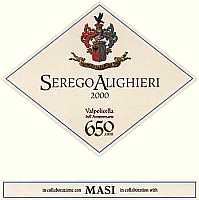
|
|
Valpolicella Classico Superiore Serego Alighieri 2000 |
|
| Masi (Italy) | |
| Grapes: Corvina (70%), Rondinella (20%), Molinara (10%) | |
| Price: € 18,50 | Score: |
| This wine shows an intense ruby red color and nuances of garnet red, little transparency. The nose reveals intense, clean, pleasing and refined aromas which start with hints of black cherry, plum jam and blackberry followed by aromas of blueberry, violet, vanilla, licorice, tobacco and hints of coriander. In the mouth has good correspondence to the nose, a slightly tannic attack and however well balanced by alcohol, good body, intense flavors, good tannins, pleasing roundness. The finish is persistent with flavors of black cherry, plum and blackberry. A well made wine. This Valpolicella ages for 24 months in cask, of which 6 in cask of cherry wood, and for at least 6 months in bottle. | |
| Food Match: Roasted meat, Braised and stewed meat with mushrooms, Hard cheese | |
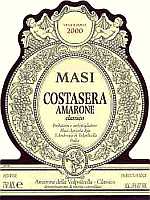
|
|
Amarone della Valpolicella Classico Costasera 2000 |
|
| Masi (Italy) | |
| Grapes: Corvina (70%), Rondinella (25%), Molinara (5%) | |
| Price: € 25,90 | Score: |
| This wine shows an intense ruby red color and nuances of garnet red, little transparency. The nose denotes intense, clean, pleasing and refined aromas which start with hints of plum, black cherry and dried violet followed by aromas of blackberry, tobacco, licorice, cocoa, vanilla and hints of leather. In the mouth has good correspondence to the nose, a slightly tannic attack and however balanced by alcohol, full body, intense flavors, good tannins. The finish is persistent with good flavors of plum, black cherry and blackberry. A well made wine. This Amarone ages for 24 months in cask followed by at least 4 months of aging in bottle. | |
| Food Match: Braised and stewed meat, Roasted meat, Game, Hard cheese | |
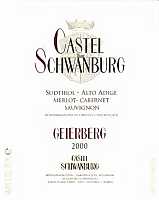
|
|
Alto Adige Merlot-Cabernet Sauvignon Castel Schwanburg Geierberg 2000 |
|
| Castel Schwanburg (Italy) | |
| Grapes: Merlot, Cabernet Sauvignon | |
| Price: € 18,80 | Score: |
| This wine shows an intense ruby red color and nuances of ruby red, little transparency. The nose denotes intense, clean, pleasing, refined and elegant aromas that start with hints of black cherry, plum and blackberry followed by aromas of blueberry, raspberry, licorice, black currant, violet, vanilla and hints of black pepper. In the mouth has good correspondence to the nose, a slightly tannic attack and however well balanced by alcohol, good body, intense flavors, good tannins. The finish is persistent with flavors of black cherry, plum and raspberry. A well made wine. Geierberg ages in cask for 12 months. | |
| Food Match: Roasted meat, Stewed and braised meat, Hard cheese | |
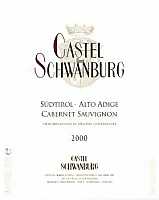
|
|
Alto Adige Cabernet Sauvignon Castel Schwanburg 2000 |
|
| Castel Schwanburg (Italy) | |
| Grapes: Cabernet Sauvignon (90%), Cabernet Franc, Petit Verdot (10%) | |
| Price: € 25,00 | Score: |
| This wine shows a brilliant ruby red color and nuances of ruby red, little transparency. The nose reveals good personality with intense, clean, pleasing, refined and elegant aromas which start with hints of plum, vanilla and black currant followed by aromas of black cherry, blackberry, violet, licorice, tobacco, cinnamon, bell pepper and hints of chocolate, eucalyptus and nutmeg. In the mouth has good correspondence to the nose, a slightly tannic attack and however well balanced by alcohol, good body, intense flavors, good tannins, agreeable. The finish is persistent with good flavors of plum, black currant and black cherry. A well made wine. This Cabernet Sauvignon ages for 18 months in barrique. | |
| Food Match: Roasted meat, Braised and stewed meat, Game, Hard cheese | |
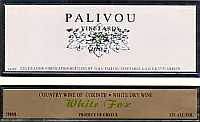
|
|
Palivou Vineyards White Fox 2003 |
|
| Palivos Estate (Greece) | |
| Grapes: Roditis | |
| Price: € 3,15 | Score: |
| The wine shows a brilliant greenish yellow color and nuances of greenish yellow, very transparent. The nose denotes intense, clean, pleasing and refined aromas which start with hints of peach, litchi and broom followed by aromas of acacia, banana, pineapple, lemon grass, apple and pear. In the mouth has good correspondence to the nose, a crisp attack and however balanced, delicate, intense flavors. The finish is persistent with flavors of pineapple and pear. | |
| Food Match: Dairy products, Crustacean appetizers, Risotto and pasta with crustaceans | |
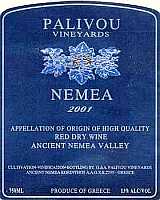
|
|
Nemea 2001 |
|
| Palivos Estate (Greece) | |
| Grapes: Agiorgitiko | |
| Price: € 4,93 | Score: |
| This wine shows an intense ruby red color and nuances of ruby red, moderate transparency. The nose denotes intense, clean, pleasing and refined aromas that start with hints of plum, violet and vanilla followed by aromas of licorice, black currant, black cherry and hints of chocolate and eucalyptus. In the mouth has good correspondence to the nose, a slightly tannic attack and however balanced by alcohol, good body, intense flavors, good tannins. The finish is persistent with flavors of plum, black cherry and black currant. This wine ages for 18 months in cask followed by 12 months of aging in bottle. | |
| Food Match: Stewed meat, Roasted meat, Hard cheese | |
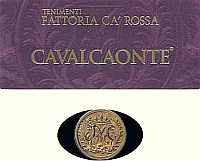
|
|
Cavalcaonte 2003 |
|
| Fattoria Ca' Rossa (Italy) | |
| Grapes: Barbera | |
| Price: € 7,00 | Score: |
| The wine shows an intense ruby red color and nuances of ruby red, little transparency. The nose denotes intense, clean, pleasing and refined aromas which start with hints of black cherry, blackberry and plum followed by aromas of blueberry, violet and raspberry. In the mouth has good correspondence to the nose, a slightly tannic attack and however well balanced by alcohol, good body, intense flavors, good tannins, agreeable. The finish is persistent with flavors of plum, blueberry and black cherry. Cavalcaonte ages in steel tanks. | |
| Food Match: Broiled meat and barbecue, Roasted meat, Hard cheese | |
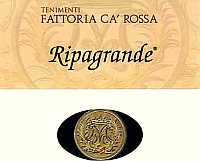
|
|
Sangiovese di Romagna Superiore Riserva Ripagrande 2001 |
|
| Fattoria Ca' Rossa (Italy) | |
| Grapes: Sangiovese | |
| Price: € 15,50 | Score: |
| This wine shows an intense ruby red color and nuances of garnet red, little transparency. The nose reveals intense, clean, pleasing and refined aromas which start with hints of black cherry and violet followed by aromas of blackberry, blueberry, vanilla, licorice and cocoa. In the mouth has good correspondence to the nose, a slightly tannic attack and however well balanced by alcohol, good body, intense flavors, good tannins. The finish is persistent with flavors of plum, black cherry and blueberry. This Sangiovese ages for 24 months in barrique and followed by 12 months of aging in bottle. | |
| Food Match: Braised and stewed meat, Roasted meat, Hard cheese | |
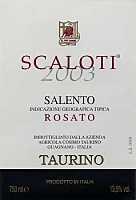
|
|
Scaloti 2003 |
|
| Cosimo Taurino (Italy) | |
| Grapes: Negroamaro | |
| Price: € 7,00 | Score: |
| The wine shows a pale cherry pink and nuances of onion skin pink, transparent. The nose denotes intense, clean and pleasing aromas which start with hints of black cherry and raspberry followed by aromas of strawberry, peach and cyclamen. In the mouth has good correspondence to the nose, a pretty crisp attack and pleasing roundness, however balanced by alcohol, delicate, intense flavors. The finish is persistent with flavors of raspberry and strawberry. | |
| Food Match: Appetizers, Cold cuts, Dairy products, Pasta and risotto with vegetables, Fish soups | |
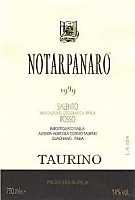
|
|
Notarpanaro 1999 |
|
| Cosimo Taurino (Italy) | |
| Grapes: Negroamaro (85%), Malvasia Nera (15%) | |
| Price: € 14,00 | Score: |
| The wine shows an intense ruby red color and nuances of garnet red, little transparency. The nose reveals good personality with intense, clean, pleasing and refined aromas which start with hints of plum jam and black cherry jam followed by aromas of carob, dried violet, tobacco, vanilla, licorice and hints of walnut husk and cinnamon. In the mouth has good correspondence to the nose, a slightly tannic attack and however balanced, good body, intense flavors, good tannins, agreeable. The finish is persistent with flavors of plum jam and black cherry jam. | |
| Food Match: Stewed meat with mushrooms, Roasted meat, Broiled meat and barbecue, Hard cheese | |
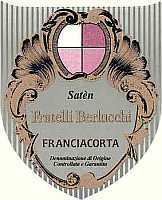
|
|
Franciacorta Satèn 2000 |
|
| Fratelli Berlucchi (Italy) | |
| Grapes: Chardonnay (80%), Pinot Blanc (20%) | |
| Price: € 22,00 | Score: |
| This wine shows a brilliant straw yellow color and nuances of straw yellow, very transparent, good effervescence, fine and persistent perlage. The nose reveals good personality with intense, clean, pleasing and refined aromas that start with hints of plum, grapefruit and bread crust followed by aromas of hawthorn, pineapple, banana, yeast, litchi, hazelnut and apple. In the mouth has good correspondence to the nose, a crisp and effervescent attack, however well balanced, good body, intense flavors, agreeable. The finish is persistent with flavors of banana, litchi and grapefruit. This Franciacorta ages for at least 37 months on its lees followed by 2-3 months of aging in bottle. | |
| Food Match: Pasta and risotto with fish and crustaceans, Roasted fish, Stewed fish, Stuffed pasta | |
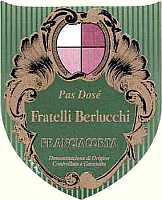
|
|
Franciacorta Pas Dosé 2000 |
|
| Fratelli Berlucchi (Italy) | |
| Grapes: Chardonnay (80%), Pinot Blanc, Pinot Noir (20%) | |
| Price: € 21,50 | Score: |
| This Franciacorta shows a pale golden yellow color and nuances of straw yellow, very transparent, good effervescence, fine and persistent perlage. The nose denotes intense, clean, pleasing and refined aromas which start with hints of pear and apple followed by aromas of yeast, hawthorn, broom, acacia, pineapple, toasted bread, hazelnut and grapefruit. In the mouth has good correspondence to the nose, a crisp and effervescent attack, however well balanced, good body, intense flavors. The finish is persistent with flavors of apple and pear. This Franciacorta ages on its lees for at least 37 months and ages in bottle for 2-3 months. | |
| Food Match: Fish and crustacean appetizers, Pasta and risotto with fish, vegetables and crustaceans, Sauteed white meat, Sauteed fish | |
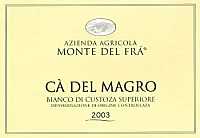
|
|
Bianco di Custoza Superiore Cà del Magro 2003 |
|
| Monte del Frà (Italy) | |
| Grapes: Garganega (50%), Trebbiano Toscano (10%), Tocai (10%), Cortese (15%), Chardonnay, Riesling, Sauvignon Blanc (15%) | |
| Price: € 9,00 | Score: |
| This wine shows a brilliant greenish yellow color and nuances of greenish yellow, very transparent. The nose reveals intense, clean and pleasing aromas which start with hints of apple, pear and hawthorn followed by aromas of pineapple, broom, wistaria, almond and hints of vanilla. In the mouth has good correspondence to the nose, a crisp attack and however balanced by alcohol, good body, intense flavors, agreeable. The finish is persistent with flavors of pear and apple. Chardonnay, Sauvignon Blanc and Riesling grapes used for the production of this wine are fermented and aged in barrique whereas the rest in steel tanks. | |
| Food Match: Pasta and risotto with fish and crustaceans, Broiled fish, Sauteed white meat with mushrooms | |
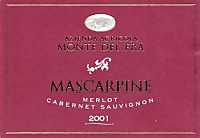
|
|
Mascarpine 2001 |
|
| Monte del Frà (Italy) | |
| Grapes: Cabernet Sauvignon (80%), Merlot (20%) | |
| Price: € 11,00 | Score: |
| The wine shows an intense ruby red color and nuances of garnet red, little transparency. The nose reveals good personality with intense, clean, pleasing and elegant aromas that start with hints of cherry, raspberry and rose followed by aromas of strawberry, blueberry, plum, blackberry, violet and vanilla. In the mouth has good correspondence to the nose, a slightly tannic attack and however balanced by alcohol, good body, intense flavors, good tannins, agreeable. The finish is persistent with flavors of blueberry, raspberry and black cherry. A well made wine. Mascarpine ages in cask for at least 12 months followed by an aging in bottle of at least 6 months. | |
| Food Match: Roasted meat, Stewed and braised meat, Hard cheese | |
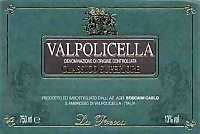
|
|
Valpolicella Classico Superiore La Preosa 2001 |
|
| Boscaini Carlo (Italy) | |
| Grapes: Corvina (50%), Corvinone (40%), Rondinella (10%) | |
| Price: € 7,80 | Score: |
| The wine shows a brilliant ruby red color and nuances of garnet red, moderate transparency. The nose denotes intense, clean and pleasing aromas that start with hints of plum jam, black cherry and violet followed by aromas of blackberry, licorice, vanilla and hints of cinnamon. In the mouth has good correspondence to the nose, a slightly tannic attack and however balanced, good body, intense flavors, good tannins. The finish is persistent with flavors of black cherry and plum. This Valpolicella ages for 18 months in cask followed by 8 months of aging in bottle. | |
| Food Match: Broiled meat and barbecue, Stewed meat, Hard cheese | |
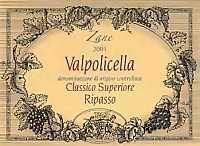
|
|
Valpolicella Classico Superiore Ripasso Zane 2001 |
|
| Boscaini Carlo (Italy) | |
| Grapes: Corvina (50%), Corvinone (40%), Rondinella (10%) | |
| Price: € 12,50 | Score: |
| This wine shows a brilliant ruby red color and nuances of garnet red, moderate transparency. The nose reveals intense, clean and pleasing aromas that start with hints of plum jam and black cherry jam followed by aromas of cyclamen, violet, licorice, tobacco, vanilla and cinnamon. In the mouth has good correspondence to the nose, a slightly tannic attack and pleasing roundness, however balanced, good body, intense flavors, good tannins, agreeable. The finish is persistent with flavors of plum jam and black cherry jam. This Valpolicella ages for 18 months in cask and for 8 months in bottle. | |
| Food Match: Roasted meat, Stewed meat with mushrooms, Hard cheese | |
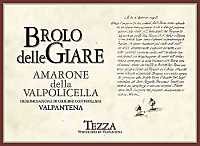
|
|
Amarone della Valpolicella - Valpantena Brolo delle Giare 2000 |
|
| Tezza (Italy) | |
| Grapes: Corvina (80%), Rondinella (10%), Croatina (10%) | |
| Price: € 40,00 | Score: |
| This Amarone shows an intense ruby red color and nuances of garnet red, little transparency. The nose reveals intense, clean, pleasing, refined and elegant aromas that start with hints of blackberry, plum and black cherry followed by aromas of blueberry, dried violet, licorice, tobacco, vanilla, chocolate and hints of black pepper and enamel. In the mouth has good correspondence to the nose, a slightly tannic attack and pleasing roundness, however well balanced by alcohol, full body, intense flavors, good tannins. The finish is persistent with good flavors of blackberry, plum and black cherry. A well made wine. This Amarone ages for 2 years in barrique followed by one year of aging in bottle. | |
| Food Match: Braised and stewed meat, Roasted meat, Game, Hard cheese | |
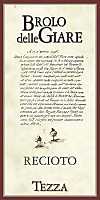
|
|
Recioto della Valpolicella Brolo delle Giare 2000 |
|
| Tezza (Italy) | |
| Grapes: Corvina (80%), Rondinella (10%), Croatina (10%) | |
| Price: € 19,80 - 375 ml | Score: |
| The wine shows an intense ruby red color and nuances of garnet red, little transparency. The nose reveals intense, clean, pleasing, refined and elegant aromas which start with hints of blackberry jam and black cherry jam followed by aromas of plum jam, raspberry, licorice, mace, cocoa, vanilla, pink pepper, dried violet and hints of enamel. In the mouth has good correspondence to the nose, a sweet and slightly tannic attack, however well balanced by alcohol, full body, intense flavors, good tannins. The finish is persistent with flavors of blackberry jam and black cherry jam. A well made wine. This Recioto ages for 12 months in barrique followed by 6 months of aging in bottle. | |
| Food Match: Hard and piquant cheese, Jam tarts, Chocolate | |
Champagne Marie StuartEstablished in 1897, the prestigious Maison, part of Alain Thienot Group, produces refined and elegant Champagne expressing the quality of the territory where they are from |
|
Among the most renowned and celebrated wines of the world there is - with no doubt at all - Champagne, the refined sparkling wine that has always been, since ever, symbol of class, elegance and well living. The Champagne region - which is located in the northern part of France, not far from Paris - is divided into five areas of which the three most important ones are Côte de Blancs, Montagne de Reims and la Vallée de la Marne, and the other two being Aube and Côte de Sézanne. The grapes which dominate the view of this region are Chardonnay, Pinot Noir and Pinot Meunier, the three grapes used for the production of the renowned wines with the precious chains of bubbles. In the heart of the region of Marne is the headquarter, since the year of its establishment, of the Maison de Champagne Marie Stuart.
The Maison is named after Marie Stuart, the generous and loyal queen, among the most charismatic personalities of Renaissance. Marie Stuart was welcomed in Reims by his aunt, abbess Renée de Lorraine, where she stayed for a long time in the Abbey Saint-Pierre-les Dames. During her stay, Marie Stuart conquered the heart of writers, poets and inhabitants of Reims. Through the Abbey where Marie Stuart stayed, is opened, when the revolution was still in the process, the route of Levant that later will be named after the renowned queen. In 1897 Maître Daubresse, a famous personality of Reims, established the Maison de Champagne and chooses, for the first time, the name of a queen to honor the more prestigious wine of the world: that's how the history of Champagne Marie Stuart was born. Marie Stuart is now considered among the most prestigious Champagne brands, and this achievement is confirmed by the class and the elegance of its wines. Since the year of its establishment, Maison de Champagne Marie Stuart has its headquarter in a suggestive and elegant architectural building which includes, besides the reception hall and the winery's offices, the cellars where the many millésime are being produced as well as another cellar where five millions bottles of Champagne age. The grapes used for the production of Champagne strictly come from selected vineyards located in the three great Champagne areas: Côte de Blancs, Montagne de Reims and Vallée de la Marne. The assembling of wines (assemblage) is scrupulously selected, according the tradition of Marie Stuart, by wine maker and cellar chief Laurent Fedou.
Marie Stuart is today part of Alain Thienot Group, seventh group of the Champagne which includes other four prestigious brands: Champagne Alain Thienot, Champagne Joseph Perrier, Champagne Canard-Duchêne and Champagne Malard. In the past four years Alain Thienot Group has been particularly focused in the introduction of its Champagne in the Italian market, concentrating its efforts in Champagne Marie Stuart, now present in many high quality hotels and restaurants of the main Italian cities, as well as taking actively part to many social and mundane events including the Woman Day. Alain Thienot Group also includes other wineries in the Bordeaux area such as Château de Ricaud, Château Rahoul, Château La Garance and Château Haut Gros Caillou. The production of Champagne Marie Stuart is scrupulous and every phase is strictly controlled. As the grapes have been pressed, the must is tasted before being used for the wine making procedures in order to use homogeneous quality of products for the same style of wine. At the end of vinification, all wines are being tasted, no matter their origin or vintage, and therefore are being classified by a specific tasting committee according to purely sensorial principles. The blend that will make the cuvée is controlled and corrected in subsequent phases and until it does not receive the unanimous acceptance from all the tasters who created it. The selection of Champagne Marie Stuart certainly is interesting and of very good quality. Champagne Brut Tradition, produced with the classic combination Chardonnay, Pinot Noir and Pinot Meunier, reveals a refined and elegant delicacy both to the nose and to the mouth. Truly convincing and of great class is Champagne Brut Rosé Tradition - which shows a beautiful and enchanting pink color - with its fresh and fragrant fruit aromas and taste, it is extremely agreeable and well made. Another pleasing surprise is offered by Champagne Demi-Sec Tradition - a pretty rare style and not really common when compared to the huge availability of bruts - which expresses its remarkable elegance to the nose and confirmed to the mouth by its slightly sweet and round taste: a truly well made combination and of great agreeability. Champagne Brut Millésime 1997 impresses for its refined complexity and for the variety of aromas, full bodied, it also confirms in the mouth its indisputable class with a pleasing roundness and personality. Finally, at the end of this selection, there is the excellent Champagne Cuvée de la Sommelière which fully benefits from the five years of aging in its lees. Cuvée de la Sommelière reveals the full elegance of Chardonnay to which is joined the good support of Pinot Noir: the result is convincing and of great class, elegant and refined aromas that are confirmed by taste as well as a good structure and roundness. A very well made Champagne of sure elegance and class.
|
||||||||||||||||||||
|
Score legend Prices are to be considered as indicative. Prices may vary according to the country or the shop where wines are bought |
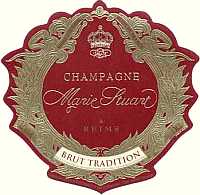
|
|
Champagne Brut Tradition |
|
| Champagne Marie Stuart (France) | |
| Grapes: Chardonnay (25%), Pinot Noir (60%), Pinot Meunier (15%) | |
| Price: € 31,00 | Score: |
| This Champagne shows a brilliant straw yellow color and nuances of golden yellow, very transparent, good effervescence, fine and persistent perlage. The nose reveals intense, clean, pleasing and elegant aromas which start with hints of yeast and bread crust followed by aromas of banana, hawthorn, quince, brioche, litchi, pear, grapefruit, hazelnut and plum. In the mouth has good correspondence to the nose, a crisp and effervescent attack, however well balanced by alcohol, good body, intense flavors, agreeable. The finish is persistent with flavors of pear, plum, hazelnut and grapefruit. This Champagne ages on its lees for 3 years. | |
| Food Match: Pasta and risotto with fish and crustaceans, Sauteed white meat with mushrooms, Fish soups | |
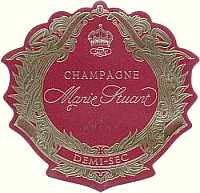
|
|
Champagne Demi-Sec |
|
| Champagne Marie Stuart (France) | |
| Grapes: Chardonnay (25%), Pinot Noir (60%), Pinot Meunier (15%) | |
| Price: € 31,00 | Score: |
| This Champagne shows a brilliant straw yellow color and nuances of straw yellow, very transparent, good effervescence, fine and persistent perlage. The nose reveals intense, clean, pleasing and refined aromas which start with hints banana and yeast followed by aromas of pineapple, hawthorn, brioche, bread crust, quince and pear. In the mouth has good correspondence to the nose, a crisp and effervescent attack with good hints of sweetness, however well balanced, good body, intense flavors, agreeable. The finish is persistent with flavors of banana, quince and pineapple. A well made Champagne. | |
| Food Match: Pasta and risotto with fish and crustaceans, Sauteed crustaceans, Semifreddo, Dessert | |
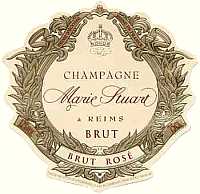
|
|
Champagne Brut Rosé |
|
| Champagne Marie Stuart (France) | |
| Grapes: Chardonnay (25%), Pinot Noir (60%), Pinot Meunier (15%) | |
| Price: € 45,00 | Score: |
| This Champagne shows an onion skin pink color and nuances of salmon pink, very transparent, good effervescence, fine and persistent perlage. The nose reveals intense, clean, pleasing, refined and elegant that start with hints of raspberry, tangerine and cherry followed by aromas of strawberry, bread crust, yeast, banana, litchi, apple and cyclamen. In the mouth has good correspondence to the nose, a crisp and effervescent attack, however well balanced, good body, intense flavors, agreeable. The finish is persistent with flavors of raspberry, cherry and strawberry. A well made wine. This Champagne ages on its lees for 3 years. | |
| Food Match: Pasta and risotto with meat, fish, crustaceans and vegetables, Sauteed fish, Sauteed meat | |

|
|
Champagne Brut Millésime 1997 |
|
| Champagne Marie Stuart (France) | |
| Grapes: Chardonnay (80%), Pinot Noir (20%) | |
| Price: € 49,00 | Score: |
| This Champagne shows a brilliant straw yellow color and nuances of straw yellow, very transparent, good effervescence, fine and persistent perlage. The nose reveals good personality with intense, clean, pleasing and elegant aromas which start with hints of banana, plum and yeast followed by aromas of bread crust, litchi, brioche, honey, hazelnut, pear, grapefruit and praline. In the mouth has good correspondence to the nose, a crisp and effervescent attack, however well balanced, good body, intense flavors, agreeable. The finish is persistent with flavors of banana, pear, grapefruit and plum. A well made Champagne. | |
| Food Match: Pasta and risotto with fish, meat and crustaceans, Roasted fish, Sauteed meat, Mushroom soups | |
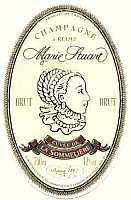
|
|
Champagne Cuvée de La Sommelière |
|
| Champagne Marie Stuart (France) | |
| Grapes: Chardonnay (90%), Pinot Noir (10%) | |
| Price: € 60,00 | Score: |
| This Champagne shows a brilliant straw yellow color and nuances of greenish yellow, very transparent, good effervescence, fine and persistent perlage. The nose reveals good personality with intense, clean, pleasing and elegant aromas which start with hints of yeast, butter and crust bread followed by good aromas of banana, hawthorn, broom, apple, hazelnut, acacia honey and grapefruit. In the mouth has good correspondence to the nose, a crisp and effervescent attack, however well balanced, good body, intense flavors, agreeable. The finish is persistent with flavors of grapefruit, apple and banana. A well made Champagne. This Champagne ages on its lees for five years. | |
| Food Match: Roasted meat, Roasted fish, Stewed meat and fish | |
| Champagne Marie Stuart Italia - Strada Brandizzo, 243 - 10088 Volpiano, Torino (Italy) - Tel. +39 011 9826603 - Winemaker: Laurent Fedou - Established: 1897 - Production: (Gruppo Alain Thienot) 7.000.000 bottles - E-Mail: qualidis@wanadoo.fr - WEB: www.mariestuart.fr |
Cellar Journal |
|
This section is reserved to wine producers who want to publish news and information about their business, to announce new products or just for communicating to its customers information and promotions about their products and activity. Send news to be published at our e-mail address.
|
News |
|
In this section will be published news and information about events concerning the world of wine and food. Whoever is interested in publishing this kind of information can send us a mail at our address.
|
Production of Red WineFull bodied and robust, but also delicate and light, red wines have always been considered the par excellence wines, the ones - at least in these times - which are getting most of the success |
|
Every time one thinks about red wine - at least in most of the cases - the common idea is always about an important wine, capable of giving wonderful emotions, and among wine lovers it is frequently thought that red wine is most of the times the only one worth of high consideration. Maybe this is because of the historical and traditional notoriety of many wines - in most of the cases are red - or because of its mysterious and impenetrable appearance, it seems in its inside is hidden a precious secret. There certainly are lots of excellent red wines but - to tell the truth - there also are many red wines that would be ashamed in front of so many white wines or other types of wine. However the magic originating from red wine is the fruit of a truly ancient history which begins, as far as men can recall, in that place of France which was capable of creating around wine its lucks since Roman times: Bordeaux. The famous French region was certainly not the only one to contribute to the notoriety and importance of red wines - it is enough to think about the many places mentioned by Pliny the Elder - however it is right Bordeaux red wine to keep still today, unchanged with time, a high charm.
|
|
The color in red wines frequently represents a discriminant factor - as well as a prejudice - in the evaluation of its quality. For many the color is a sign of high quality in case it is dark, intense and impenetrable to light, for others it simply represents one of the many factors allowing the assessment of a red wine. It is however indisputable that intensity and scarce transparency of a red wine are very charming to consumers and it is probably more appealing to see - not only for the presumed promise of importance it could have - a wine with a dark and intense color instead of a one which is transparent and pale. Despite color in a red wine - as well as its transparency and its intensity - are the sign of specific productive characteristics - in particular the coloring capacity of the grape and the maceration period in skins - they are not always fundamental factors for the assessment of quality. It would be enough to think about Nebbiolo and Pinot Noir grapes, just to mention two examples, which do not have a high coloring capacity, however from these grapes are being produced magnificent wines, such as Barolo and Barbaresco, in case of Nebbiolo, and the great red wines of Bourgogne, in case of Pinot Noir. Red wine, as it is commonly known, is exclusively produced with red berried grapes. Grape juice - of every grape, including the red berried ones - has always the same gray-green color and certainly far from any resemblance to red. The coloring substances of the grape - the ones which can make a wine red - are all concentrated in the skin and the quantity of these substances - polyphenols commonly called pigments - changes according to the variety and the cultural and environmental conditions. For example, the coloring capacity of Sagrantino - the famous Umbrian red berried grape - is higher than Nebbiolo, as well as Cabernet Sauvignon has a coloring capacity far higher than Pinot Noir. A higher coloring capacity also means a higher quantity of tannins - therefore astringency - that will also contribute to the body of wine. The extraction of coloring substances from skins is done by macerating them in the must and the longer the time, the higher the intensity of color, therefore by using a grape having a high coloring capacity it is possible to make a rose wine - or paler red wines - by limiting the maceration period.
The quality of tannins in grapes is another important factor for the production of red wines. Whether it is true ripeness in white berried grapes is basically determined by the level of sweetness and acidity, in the red berried ones there is also a third and fundamental factor: phenolic ripeness. Tannins - chemical compounds belonging to the family of polyphenols - are responsible in red wines both for astringency and the body, as well as for the color obtained by anthocyanins. The organoleptic quality of astringency is often an important factor for the agreeability of a wine: when it is too accentuated its agreeability is low. During the ripeness process of grape, the quantity of polyphenols increases and, in particular, it also increases the organoleptic quality of tannins. For this reason - in quality wines - harvesting begins only when the grape is considered as phenolically ripe. As the ripeness process is developing, tannins get a rounder and more velvety organoleptic quality - that is less astringent and more agreeable - and moreover they are also more easy to extract from the skin. Optimal phenolic ripeness must also consider the levels and the balance of acids and sugar in the grape. Most of the times tannins get a rounder and a more agreeable quality when the level of sugar and acids in grapes have gone beyond their optimal ripeness level. For this reason it is not always possible to harvest phenolically ripe grapes because the risk of making unbalanced wines in the other organoleptic qualities would be very high. In case the time of harvesting would be determined only by phenolic ripeness of grapes, the risk would be of harvesting overripe grapes with the result of making wines with high percentages of alcohol, with aromas and taste of fruit jams and the acidity would dangerously be too low. However the astringency of the wine would be very low and its character would absolutely be velvety and smooth. The quantity of tannins and their level of astringency change according to the grape variety, yields per hectare, ripeness level, climate, area and, last but not the least, wine making practices. For this reason the assessment of phenolic ripeness in grapes must also consider these factors, as well as the style of wine to be produced.
|
||||||||
|
The grape is now ripe and ready for harvesting. After an accurate analysis of the chemical and biological qualities of grapes - according to the type of wine to be produced - the harvesting is done and therefore grapes are sent to the cellar. Here grapes are destemmed, that is the stem is eliminated by using a special machine called destemmer. This operation is useful to the quality of the wine as polyphenols contained in stems are very astringent and they would affect the organoleptic qualities of wine. After destemming, the berries are being pressed in order to break the skin without excessively damaging it as well as avoiding the bruising of pips that otherwise would release very astringent and bitter substances. At the end of this procedure it is obtained the must ready to be fermented. Before proceeding with the fermentation they can optionally be done specific procedures - according both to the style of wine to be made and to the laws in force in country where the wine is being produced - in order to give the must specific organoleptic and chemical qualities. Before proceeding with fermentation the must could be macerated with the skins at a low temperature that would avoid the start of fermentation, the so called cold maceration. As the fermentation is not started yet - in the juice there is no alcohol - it will only be obtained the extraction of aromatic and coloring components soluble in water. Before starting the fermentation it is also possible to correct or change some characteristics of the must according to the laws in force in the country of production. Among this procedures there is chaptalization, which is usually allowed in cool climate areas, consisting in adding sugar to the must in order to obtain a higher quantity of alcohol. Another procedure allowed in some countries is the concentration of the must by simply eliminating or removing part of the water. Concentration is usually done by means of particular vacuum machines or reverse osmosis machines. Another type of correction that could optionally be done in the must is acidification - a practice which is usually done in warm climate areas - consisting in adding some acid, usually tartaric acid, in order to improve the balance with sugar and therefore of wine.
|
|
The must is now ready to begin its journey that will transform it into red wine by means of alcoholic fermentation. Before proceeding with fermentation, the wine maker could decide about adding specific yeast cultures in order to have a better control over this process as well as giving the wine particular organoleptic qualities. The main and fundamental role of alcoholic fermentation (or primary fermentation) consists in transforming the sugar contained in the must into alcohol and carbon dioxide - a job done by yeasts - however this process has the purpose of developing the secondary aromas of wine as well. Alcoholic fermentation is usually done in stainless steel tanks which are filled with must, skins and pips. The process of fermentation will cause an increasing of temperature of the tanks - and hence of the must as well - therefore it is of primary importance to control this factor. Fermentation temperature in red wines is usually from 25° and 30° C (77°-86° F), however it changes according to the type of wine to be made. Higher temperatures allow a higher extraction of coloring substances and tannins, therefore in wines having a delicate body the temperature is kept at lower levels, whereas in full bodied wines temperatures are higher. Besides constantly controlling the temperature - while avoiding the overheating of the must with the subsequent risk of killing the yeast - another problem is about the so called cap. During fermentation, carbon dioxide pushes the skins towards the surface therefore forming a thick layer which is called cap. This layer of skins being in contact with air can easily oxidize and develop vinegar - hence compromising the wine - therefore it is necessary to periodically break it in order to plunge it again in the fermenting must. This procedure is manually done by using a specific tool - a long paddle - in order to punch the cap down or by means of automatic systems and mechanisms installed on the fermentation tanks. During the fermentation process are being extracted from the skins both coloring substances, mainly anthocyanins, and tannins. At the beginning of fermentation the first components to be extracted from the skins are the coloring substances because they are more soluble in water and, as the quantity of alcohol gets higher and with longer maceration, tannins are being extracted. The duration of fermentation and maceration depends on the style of wine to be made as well as on the varieties of grapes. In light bodied wines this phase can last three or four days - a sufficient time in order to extract color and some tannins - whereas in full bodied wines this time can also have a duration from one week to one month. The process of alcoholic fermentation will be completed, in most of the cases, within one week. Maceration, that is the phase in which tannins and gustatory substances are being extracted, is a process that must be scrupulously controlled because excessively long times could result in the extraction of an excessive quantity of polyphenols therefore obtaining very astringent wines with a bitter and mediocre taste. At the end of maceration the wine is separated from the skins and transferred in the aging containers. As opposed to white wines, in red wines malolactic fermentation - the process in which malic acid is transformed into lactic acid and carbon dioxide - is always done. In red wines malolactic fermentation always plays a positive role because it makes the wine smoother and less astringent. Malic acid accentuates the astringent effect of tannins therefore its transformation into a “sweeter” acid, such as lactic acid, greatly contributes to the roundness of wine. The type of container used for the aging of wine depends on the style to be made. The most frequent one is the cask, or the barrique, however it can also be made of stainless steel. The aging in cask or in barrique does not consist in the enrichment of the wine with tannins and aromatic components of the wood only. No matter the most evident effect to the nose and to the mouth of a wine aged in wood is a higher roundness and the presence of spicy aromas and taste, of which the most common one is vanilla, the staying in wood also allows the stabilization of wine. Even the porosity of wood plays a fundamental role in the aging of wine by allowing the air in the outside of the cask to reach the inside in small quantities which positively influence aging. Likewise water and alcohol passes through the staves of the cask therefore reaching the outside and with the result of concentrating the wine. The aging period of the wine in cask depends both by the varieties of grapes with which it was made and by the style of wine to be produced, usually a variable period ranging from three or four months up to even some years. During the aging period, on the bottom of the container can be formed a layer of sediments and therefore it could be necessary to decant the wine in other containers in order to make it more limpid. Many red wines are made of wines produced with different grapes and most of the times each wine is being aged in separate casks. At the end of the aging, these wines will be assembled - a procedure also known as assemblage or blending - where the wines will be blended together in order to make the finished product. At this point the wine is allowed to stabilize for a certain amount of time and therefore the quality of the finished product will be evaluated. In case the wine would be too astringent - that is the quantity of tannins is excessive - it can also be processed with fining procedures usually done by adding some egg whites in the cask. Egg whites by precipitating to the bottom of the cask remove part of the tannins - as well as part of the color - therefore making the wine more transparent and less astringent. At the end of stabilization procedures the wine is bottled and before being commercialized it is further aged in the bottle for a variable period of time from some months to some years.
|
||||
VodkaThe famous distillate from Eastern Europe countries is generally produced with grains, however it is also possible to make it from other materials, such as potatoes |
|
Vodka is a distillate of grains - mainly rye and wheat - with a crystalline transparency, very fine taste and a delicate aroma. It can be produced with potatoes, molasses and other vegetables. It probably takes its name from the added water, voda in Russian.
|
|
They were probably Egyptians to make the first rudimentary equipments for distillation: alembic stills. At those times distillation was mainly used for the production of essences and also Romans used the same technique for the production of medicines. Only after many years the distillation process was used for the production of alcohol. At the end of the Middle Age, in the cities of Salerno, Toledo and Montpellier were produced the very first rudimentary alcoholic distillates used for the preparation of flammable liquids. We have to wait for Theophrast Bombast von Hohenheim in order to read the word alcohol in the sense we mean today. The distillation process was then elaborated in many places therefore giving origin to many products, each one having its history and traditions. The most used products for the production of brandies certainly were grains, both because they were locally available, where they were indispensable for the nutrition of people, and for the availability in markets, as well as for their relatively convenient price. The most common grain brandies are whisky, whiskey and vodka. Vodka is most typical Russian brandy known everywhere in the world. In Russia the origins of vodka are dated back to Peter the Great, despite it is not the only country to claim the origins of this distillate. Also Poland claims to be the homeland of vodka, because the history of this distillate in this country is as ancient as of Russia. Scandinavians and Slavic people of Northern Europe have taken, since many centuries, alcoholic beverages very seriously. The logical explanation is because of the particularly cold climate and this would compromise the transportation of beverage with low alcohol, such as beer and wine. These beverages, when transported in wintertime, tended to freeze therefore the volume increased and the precious load was lost. This contributed to the spreading of beverage with high percentages of alcohol that were immune to this problem. Before the spreading of the alembic still, the production of alcoholic beverages and spirits made use of a stratagem consisting in taking advantage of cold temperatures. As water freezes at 0°C (32° F) and gets transformed into ice, whereas alcohol needs lower temperatures in order to freeze, wine, beer or cider was fermented, and after it was frozen, it was possible to separate alcohol from water. This certainly was a less refined method, anyway it was a valid method for those times, even because there was no alternative available. It seems that in Eastern Europe the first distillate was produced by using beer and cider and it was called “perevara”. The distillate called “vodka” takes its name from the water added during its production, in fact in Russian “voda” means water. In the beginning vodka was prepared for medical purposes. Slowly distillation procedures become more and more refined and therefore it was possible to make a product that could be drunk for pleasure instead because one had to. The term vodka - in Poland known as “wodka” - was gradually used for identifying the renowned alcoholic beverage. In the beginning, as the distillation techniques allowed the production of a high alcoholic liquid, it was used as an ingredient for the preparation of gunpowder for rifles. Its colorless appearance and its neutral taste made this product very interesting for Sherry and Porto producers. Thanks to these characteristics vodka was particularly suited for the fortification of these extraordinary wines.
The origin of vodka is, just like the majority of products whose history is very ancient, uncertain and controverted. One of the countries which claims the origin of vodka is Poland. The first evidences are dated back to 1300's and were found near the city of Krakow, however the first written documents are dated back to 1400's. The progenitor of vodka seems to be okowita, probably derived from the Latin term aquavitae, used both as a medicine and a beverage, as well as for other purposes. In 1534 in a book about medicine it is mentioned vodka used as an after shave lotion, whereas aromatized vodkas with infusions of officinal herbs were very popular as a remedy for many diseases - such as depression - as well as for many pains. In 1546 the king liberalized the production and trading of vodka as well as of the products connected to this distillate, however the aristocracy insisted in having the exclusive privilege of producing and selling vodka. From the half of 1800's on, Polish distilleries were shipping both aromatized and natural vodka in every country of Northern Europe, including Russia. Currently, after the falling of communism, distilleries are managed by private companies again which export quality vodka worldwide. Even Russia is one of the countries claiming the origin of vodka and Russian are very convinced about that. Some evidences show the production and trading of vodka in Russia are dated back around the fourteenth century. In 1540 Zar Ivan the Terrible established the first State monopoly for vodka while reserving to nobles the right of distillation. This restriction had the consequence of the establishment of many clandestine distilleries all over the country. With time official distilleries began to produce vodka with higher and higher quality, both natural and aromatized. Even Zars were interested in the production of this brandy and they built in their palaces experimental distilleries in order to obtain a product of increasing quality. From the simple alembic still the production passed to the use of multiple distillations, until a scientist experimented the filtering by means of vegetal carbon in order to purify the distilled product. The production of vodka in Russia was also the origin of a constant growing both in quantity and, in particular, in quality, also thanks to state contributions, the inventive of Russians and to alembic stills imported from Western Europe. Authorities continued to promote the quality of vodka by financing researches. In 1902 “Vodka Moskovskajia”, a rye vodka with 40% of alcohol to which was added non distilled and non aromatized water, was decreed by law as the reference point for the whole Russian production. The production of Russian vodka reached excellent qualitative levels although the quality product was only reserved to the higher classes, whereas the common people could only afford lower quality products. The falling of the wall of Berlin, as well as the change of the geography and politics in Eastern Europe, did not change the way vodka is produced. Today in the new Russian Federation, as it was in Soviet Union and in the pre-revolutionary Russia, quality vodka is consumed by higher social classes and part is also destined for export, whereas common people can only afford cheaper brands of mediocre quality. Talking about the rest of the world, vodka was imported for the first time in the United States of America in the twentieth century in order to satisfy the requests of immigrants from Eastern Europe. Besides this particular case, the selling of vodka in the United States have been scarce for many years and until the end of World War II. As it may sometimes happens, in order to make a successful product it only takes an original idea and a proper advertisement campaign: this is the case of the American market. A merchant of liquors from South Carolina began to advertise his product by using the slogan “Smirnoff, the white whisky. No taste. No smell”. The idea was very appreciated as well as the vodka. The selling increased also thanks to the success of vodka as an ingredient for many beverages and cocktails. Its characteristics are well suited to the extravagant blends used in many cocktails all over the world. Today vodka is the most common white brandy also thanks to its versatility and the skill of producers and of their successful advertisement campaigns. Having a good product is not enough, it also takes the capacity of being able to sell it. Eastern Europe certainly is the homeland of vodka, however other countries have developed a technique for the production of spirits as well. Besides historical vodka producers - such as Russia, Poland, Ukraine, Estonia, Latvia and Lithuania - there is also Sweden where a vodka of increasing quality is being produced, both natural and aromatized. Finland, for example, produces vodka from grains and in particular from wheat. The American production must be, by law, limited to non aromatized vodka. In Central America local production is concentrated on molasses vodka, destined to export in order to be blended to other products. Australia produces a small quantity of vodka and it is almost destined for domestic consumption. In Asia, with the exception of rather small places, the best vodkas are the ones produced in Japan.
|
||||||||||||
|
At the beginning of production, when distillation techniques were still rudimentary and improvised, the finished products were aromatized in order to hide the low quality. With time the technique was improved and the best distillers began to produce vodkas without adding any aromatic substance. Later, when everyone had acquired a good experience in distillation and non aromatized vodka was a consolidated goal, producers resumed to make aromatized vodkas in order to offer the market new products and new sensations. From the first experiments, aromatized vodkas have dramatically improved their quality. Today can be found vodkas virtually aromatized with every fruit, although the most successful ones are produced with fruits like black currant and orange. The most common aromatized vodka types are:
There is no universal classification for vodka. Every country has its method for distinguishing quality and the characteristics of its products. In Russia vodka is produced with refined alcohol from wheat and processed with active carbon. It is classified as: osobaya, that is special, a high quality product, and krepkaya, that is strong, a product having a high percentage of alcohol of about 55-57%. In Poland the first productions took place at the beginning of 1400's however its spreading was in fifteenth century. In the beginning was used wheat but at the end of eighteenth century were used potatoes as well. The most ancient distillery of Poland certainly is the one of Baczewski family, who was capable of spreading both in the local and foreign market. Currently it is being produced with double rectified rye alcohol which is then allowed to age. Vodka is being classified according to the level of purity: luksusowy corresponding to deluxe, wyborowy corresponding to premium and zwykly corresponding to standard. In the United States of America there are no distinctions just because American vodkas basically are neutral distillates, therefore there is no need for a classification. The first Finnish brandies were produced with grains but as America was discovered, and with that potatoes as well, this plant was used for the production of the famous distillate. Finnish are proud of their tradition and prefer calling their distillate with the typical name viina instead of the generic name vodka.
|
|
Vodka is being produced by fermenting an infusion of simple sugars mainly derived from grains, however there can be used also molasses, potatoes and beets as well as other products. Despite the fact vodka is produced with a great variety of grains and plants, wheat and rye are the classical sources of sugar for the production of this distillate. Every country and every distiller have their preferences, their secrets and their production techniques. Whereas Russian quality vodkas are produced with wheat, the lower quality products are derived from molasses. American distillers virtually use every type of raw matter. After having chosen the raw matter it is then chosen the type of alembic still to be used. Some distillers prefer the batch alembic still, just like the one used for the production of Cognac, in which the product is being distilled one time and then distilled again in order to increase finesse and alcoholic percentage. This procedure, when considered from a purely technical point of view, is not very efficient, although from a qualitative point of view it is the one allowing the extraction from the raw matter of some of its aromatic characteristics. Vodka obtained from a batch alembic still will be different from the one obtained from an “efficient” column alembic still that will make a perfect product although characterless. With the exception of some cases, vodka is not aged in wood. After the distillation process the product is ready for being commercialized, however some producers prefer to age some of their products. Not all vodkas are limpid and transparent because this distillate is frequently aromatized or colored with countless varieties of fruit, spices, herbs and even hot pepper.
|
AquavitaeReview of Grappa, Distillates and Brandy |
|
|
| Distillates are rated according to DiWineTaste's evaluation method. Please see score legend in the "Wines of the Month" section. |
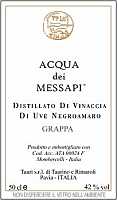
|
|
Grappa Acqua dei Messapi |
|
| Taurì (Italy) | |
| (Distiller: Distilleria Astigiana) | |
| Raw matter: Pomace of Negroamaro | |
| Price: € 21,00 - 50 cl | Score: |
| This grappa is colorless, limpid and crystalline. The nose reveals intense, clean and pleasing aromas of hazelnut, blueberry, raspberry and caper with alcohol pungency pretty perceivable. The taste is agreeable and intense with well balanced sweetness, perceptible alcohol although not excessively pungent, intense flavors, good roundness. The finish is intense and persistent with a pleasing sweet hint and flavors of raspberry and hazelnut. This grappa is produced with the pomace of Taurino's Patriglione wine. Alcohol 42%. | |
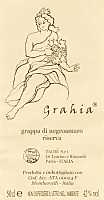
|
|
Grappa Grahia |
|
| Taurì (Italy) | |
| (Distiller: Distilleria Astigiana) | |
| Raw matter: Pomace of Negroamaro | |
| Price: € 24,00 - 50 cl | Score: |
| This grappa shows a pale amber yellow color, limpid and crystalline. The nose reveals good personality with intense, clean and pleasing aromas of vanilla, toasted wood, dried plum, banana, caramel, chocolate, hazelnut, pear and hints of hay, alcohol pungency almost imperceptible. The taste is round and intense with pleasing sweetness and not excessive alcohol pungency. The finish is intense and persistent with flavors of caramel, pear and banana. This grappa s produced with the pomace of Taurino's Patriglione wine and it is aged for 19 months in cherry wood casks previously used for the aging of white wine. Alcohol 42%. | |
Wine Parade |
|
|
| The best 15 wines according to DiWineTaste's readers. To express your best three wines send us an E-mail or fill in the form available at our WEB site. |
| Rank | Wine, Producer | |
|---|---|---|
| 1 |
| Turriga 1998, Argiolas (Italy) |
| 2 |
| Amarone della Valpolicella Classico Capitel Monte Olmi 1999, Tedeschi (Italy) |
| 3 |
| Anjou 2001, Domaine de Montgilet (France) |
| 4 |
| Rioja Reserva Era Costana 1999, Bodegas Ondarre (Spain) |
| 5 |
| Alto Adige Gewürztraminer Kolbenhof 2002, Hofstätter (Italy) |
| 6 |
| Barolo Cicala 1999, Poderi Aldo Conterno (Italy) |
| 7 |
| Franciacorta Cuvée Annamaria Clementi 1996, Ca' del Bosco (Italy) |
| 8 |
| Margaux 2000, Ségla (France) |
| 9 |
| Brunello di Montalcino Prime Donne 1998, Donatella Cinelli Colombini (Italy) |
| 10 |
| Riesling Cuvée Frédéric Emile 1999, Maison Trimbach (France) |
| 11 |
| Aglianico del Vulture La Firma 2000, Cantine del Notaio (Italy) |
| 12 |
| Harmonium 2001, Firriato (Italy) |
| 13 |
| Montepulciano d'Abruzzo Villa Gemma 1999, Masciarelli (Italy) |
| 14 |
| Syrah Winemaker's Lot Vic 3, Concha y Toro (Chile) |
| 15 |
| Vouvray 2002, Château Gaudrelle (France) |
| |||||||
Privacy Policy | |||||||


| Copyright © 2002-2024 Antonello Biancalana, DiWineTaste - All rights reserved |
| All rights reserved under international copyright conventions. No part of this publication and of this WEB site may be
reproduced or utilized in any form or by any means, electronic or mechanical, without permission in writing from DiWineTaste. |